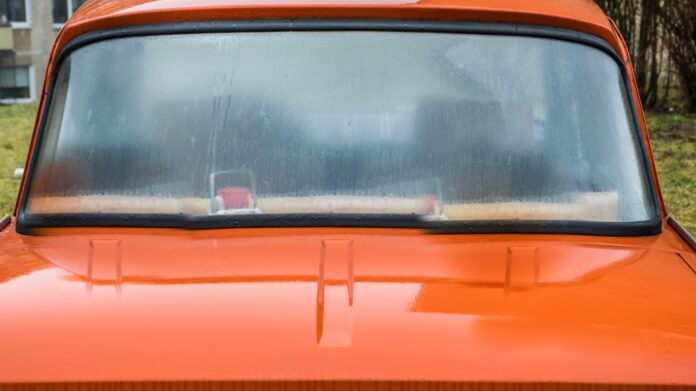Automotive history provides a fascinating look at the evolution of design and technology. Nowadays, during rainy or cold conditions, there is a handy little button on your dashboard that defogs the rear window, identified by a rectangle with three curving arrows pointed upward. Although, recently, car makers have begun to mess with the formula, frustrating some drivers, as the defrost feature is one of several car settings that have no business being controlled through a touchscreen.
Originally invented by German engineer Heinz Kunert in the 1960s, this idea transformed vehicle travel in conditions that historically made things challenging. Kunert’s defroster technology has been a common stock feature in new vehicles for some time, and it works by running current through elements or grids embedded in or painted on the glass.
However, even up to the late ’70’s, some cars didn’t come equipped with this technology, which made navigating in inclement weather more arduous (especially if the car didn’t have a heater), with reduced visibility out of the rear window. The solution, at the time, was something called an anti-mist panel or rear window invisible demister. They often came packaged in cardboard tubes and were available in several sizes to accommodate a range of window designs. Essentially, you would install this clear film on the inside of the rear window, which prevented it from fogging up. Although, those who remember them don’t all agree they were actually helpful back in the day, quite the opposite in some cases.
Did they really work?
While this once hot-ticket item was readily available at the time (and apparently on many Christmas lists), these plastic demisters are no longer made, making them highly sought after by classic car afficionados. However, their effectiveness has received mixed reviews from those with experience using them. For instance, posts on the Morris Minor Owners Club forum describe them as, “completely useless,” and one user explained the process of working with them as involving “trials and tribulations.”
Another forum, Rods ‘n’ Sods, includes more insight, with one classic car buff explaining that these stick-on demister panels would turn brown over time, and the edges would curl, causing them to fall off the rear window. Even if you do locate one of these vintage demisters on an auction site, it’s not clear how they’ll perform given their age. For instance, some claim the clear plastic no longer stays in place, as the film has perhaps degraded over the decades. While the most popular cars of the 1960s are still stunning to this day, it’s hard to imagine that some of them lacked the means to clear up their rear window and would’ve needed something like the plastic demister panel.
However, some claim that these vintage add-ons do perform well and say they have used them successfully for several years on various classic vehicles. Other descriptions of these anti-mist products say that they were somewhat effective but did require a bit of work to properly fit in the rear window.
Electric defroster kits which also clear foggy windows
Another reason you likely can’t find this classic aftermarket add-on is because, as technology improved, superior products became available. Speaking of improved tech, we asked you to highlight your favorite cold-weather car mods, and the inclusion of heated seats shows just how much better drivers have it today. Of course, if your vehicle’s rear window doesn’t have a built-in defogger for some reason, you could attempt to have it replaced with one that does, but this can run you north of $400 (depending on the make/model of your vehicle). Fortunately, there are aftermarket electric defrosters, which work similarly to run current through heating elements on the glass.
Depending on the size of your rear window, you’re looking at around $89 to $359 for a defroster kit, which may still be less than a window replacement. Essentially, you adhere the elements across the glass like big stickers and then apply side bus bars to contact the elements. Finally, you run the wires from the rear of the car to under the hood and connect them to your vehicle’s battery.




